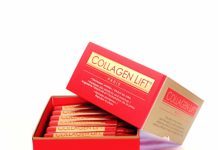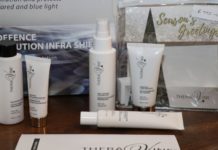Chemical peels have been around for a long time for good reason, they work. A chemical peel done professionally can heal your skin woes, from acne, acne scars, pigmentation and uneven skin tone to fine lines and wrinkles.
A chemical peel is a skin-resurfacing procedure in which a chemical solution is applied to the skin to remove the top layers. The skin that grows back after a chemical peel is smoother and younger-looking.
“Chemical peels can be done at different depths — light, medium or deep — depending on your desired results. Each type of chemical peel used differs in the following: chemical solution, concentration, duration of skin contact and number of layers applied. Deeper chemical peels (done by doctors only), produce more-dramatic results, but also involve longer recovery times,” said Dr Lize Steyn from Youthful Beauty in Middelburg.
She said while many of us wear it during the summer months, here’s the reality: you’ve got to wear sunscreen every day of the year, come rain or shine.
“The sun emits harmful UV rays year-round. Even on cloudy days, so make sure you apply sunscreen every single day.”
Why a chemical peel is done?
A chemical peel can be used to treat various skin problems. Depending on the issues you’re addressing with the procedure, you’ll choose a chemical peel in one of three depths:
Light chemical peel.
A light (superficial) chemical peel removes the outer layer of skin (epidermis). It can be used to treat fine wrinkles, acne, enlarged pores, uneven / dull skin tone, pigmentation and dryness. You might have a light chemical peel as often as every two to five weeks — depending on your desired results.
Medium chemical peel.
This type of chemical peel removes skin cells from the epidermis and from portions of the upper part of your middle layer of skin (dermis) called the papillary dermis. A medium chemical peel can treat wrinkles, acne scars, enlarged pores, sagging skin and pigmentation. You might repeat a medium chemical peel after three to nine months to maintain results.
Deep chemical peel.
A deep chemical peel removes skin cells from the epidermis and from portions of the mid to lower layer of your dermis called the reticular dermis. Your beautician might recommend a deep chemical peel if you have deeper wrinkles, scars, sagging skin or precancerous growths. A deep chemical peel can only be performed once and by doctors!
“A light chemical peel can improve skin texture and tone, as well as decrease the appearance of fine wrinkles. The results will be subtle at first, but will increase with repeated treatments. After a light chemical peel, avoid sun exposure until new skin completely covers the treated area,” Dr Lize said.
If you have a medium chemical peel, treated skin will be noticeably smoother after the procedure. You must avoid sun exposure for several months.
“After a deep chemical peel, you’ll see a dramatic improvement in the look and feel of treated areas. You’ll need to protect your skin from the sun permanently to prevent changes in skin colour.”
Keep in mind that chemical peel results might not be permanent. As you age you’ll continue to acquire lines by squinting and smiling. New sun damage also can reverse your results and cause changes in your skin colour.
Safety measures
- Avoid unprotected sun exposure.I t’s important to consistently use sunscreen at least four weeks before the procedure to help prevent irregular pigmentation in treated areas. Discuss sun protection and acceptable sun exposure with your doctor.
- Avoid certain cosmetic treatments and certain types of hair removal. About a week before the peel, stop waxing or using depilatory hair-removal products. Also, avoid bleaching, massages or facial scrubs in the week before your peel.
We asked Dr. Lize about some myths about chemical peels.
Myth #1 Chemical peels will leave you with significant downtime
Truth
People tend to associate chemical peels with the infamous Sex and the City episode where Samantha had a chemical peel and looked as if she was severely burned with sheets of skin falling off. No ladies, this is not entirely true. There are many different types of peels available. Some of these peels are very mild with no visible exfoliation or downtime at all.
There are deeper peels that are stronger and may leave visible peeling and slight redness. For instance, doing a series of these peels can give you the results of one very deep peel without the downtime or the “Samantha” look.
Myth #2 Chemical peels can be performed at home
Truth
Yes, there are chemical peels available online. However, in the wrong hands, it could still be dangerous and cannot give you the results you would get from a professional peel.
Some women that have performed peels by themselves have caused irreparable damage to the skin, including hyper or hypo-pigmentation and even scarring. There are many steps that go into these treatments besides applying the product. There are medical questionnaires that need to be thoroughly reviewed for possible contraindications. For instance, if someone is prone to cold sores or has an active cold sore, applying a chemical peel can cause a herpetic breakout over the entire face that can eventually lead to scarring. The skin also needs to be cared for properly before, during and after the procedure. These “on-line” peels most often do not come with instructions and clients find themselves spending more money in the long run on expensive medical appointments and cosmetic treatments to try and repair the damage.
Myth #3 Receiving a chemical peel is a one-time solution
Truth
Although chemical peels can help repair visible damage on the surface of the skin, they cannot repair the irreversible damage of the sun and other factors associated with ageing. In fact, if clients are receiving chemical peels and continue to sunbathe with no SPF they will most likely get more damage than they previously had. Superficial peels are performed to reduce the appearance of fine lines, even out skin tone and to treat acne. The deeper peels are performed for these same reasons but because they penetrate deeper into the skin, they will create a wound response to stimulate collagen production as well. Receiving this treatment once will give the skin visible results, however, it needs to be done on a more consistent basis to receive the best outcome.
Myth #4 Chemicals are bad for you
Truth
Not all chemicals are bad. The word chemical often scares individuals from receiving these beneficial treatments. Yes, it a chemical, but so is anything formulated from a chemist, including the ibuprofen you take for a headache or the hydrogen peroxide you put on a cut. Actually the active acids in most chemical peels are natural. Glycolic acid comes from sugar cane, lactic acid from sour milk and salicylic acid from wintergreen. These products are safe to use as long as all risks and possible contraindications are assessed before the treatment. Also the word “acid” can have negative connotations. People are often taught that acids are dangerous because there are some that can severely burn the skin, such as battery acid. The fact is that some of the most beneficial non-irritating ingredients, like hyaluronic acid, actually help to heal the skin and cause no exfoliation at all and hyaluronic acid occurs naturally in the body!
Myth #5 Chemical Peels are only beneficial for those with problem skin
Truth
Chemical peels can be beneficial for most skin types including sensitive skin. Chemical peels not only treat problem-prone skin, but they can also be preventative as well. The normal rate of skin cell turnover is between 21-28 days. Depending on the amount of damage in our skin, this rate tends to slow down dramatically usually starting in our late 20’s. By receiving very mild skin peels such as alpha and beta hydroxy acids which are both superficial peeling treatments this will help to increase this cellular turnover to stimulate healthy cell growth while exfoliating dead cells. Prevention for the skin will only be effective if proper skincare products are used along with proper sun protection.
For more information about chemical peel do’s and don’ts call Dr Lize on 082 575 8103 or [email protected].






